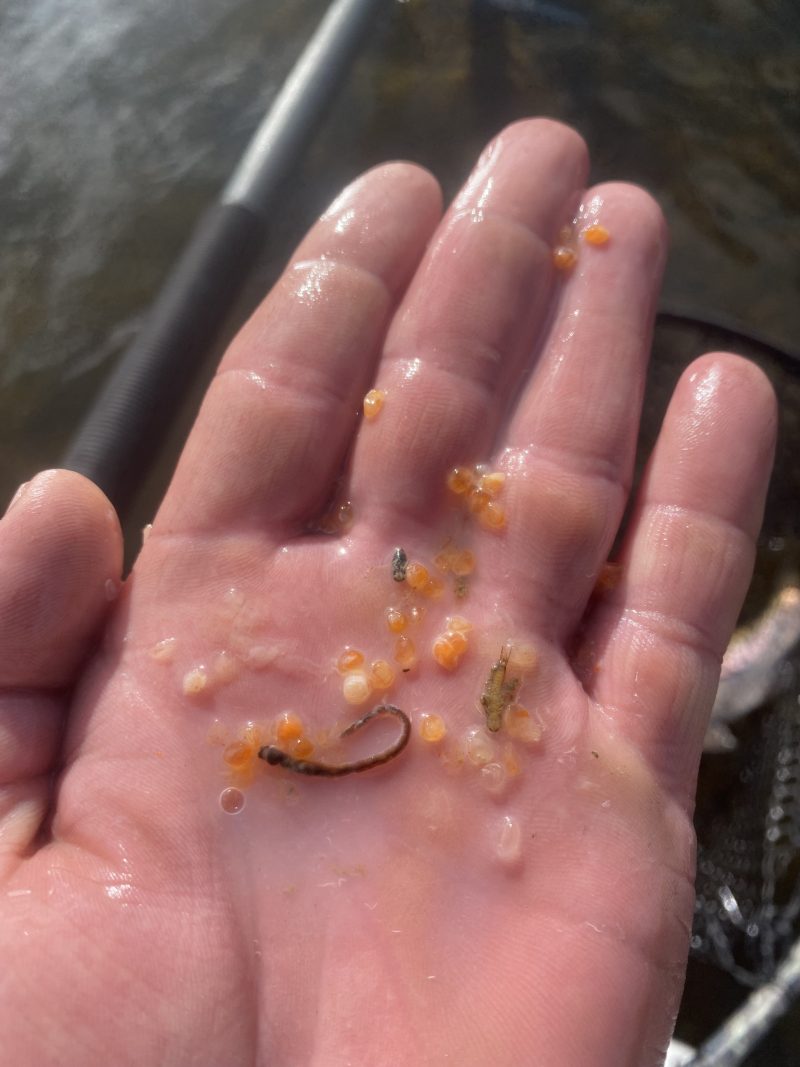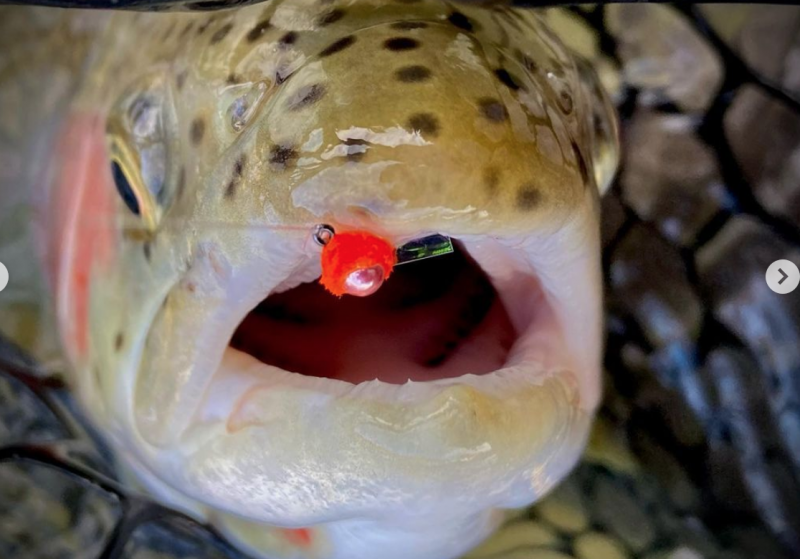Bug of the Month … the Egg Pattern!
Our bug of the month pattern of the month for February is not even a bug. It is the incredible, edibleSM egg. As we head through the heart of winter, this pattern is going to tempt fish from their doldrums with the potential to change up your day. They do say that breakfast is the most important meal of the day, right?
Thinking About Eggs
Even though February is not quite yet spring spawn for Rainbows, eggs will still be a potentially productive pattern. And by “potentially,” I mean that when hatches may be sporadic or just not happening at all, the egg can get strikes. Maybe it is some sort of “muscle memory” type of thing. Fish know! Eggs are high in nutritional value so it could be that the lure of a dead drifting egg is just irresistible.

Serving Up the Egg Pattern
Unlike other subsurface patterns we fish, the egg is not going to have much movement through the water. Unlike nymphs, eggs aren’t working their way to the surface. They’re not working themselves anywhere. Trout are lazy and opportunistic. Because eggs can’t escape, they’re an easy target. Natural eggs have basically gotten dislodged from the river bed, so they are going to drift with the current down the river.
A key element in fishing egg patterns is that the drift has to be pretty clean. That egg has to look like it belongs in the water. Jon Easdon points out that whether you are using an indicator or not, eggs have to be presented in a very clean dead drift.
Anglers want to fish it deep, too. The challenge here is to get weight right so the egg moves realistically near or at the bottom of the river, just as with any other subsurface techniques. Sometimes you want the egg to almost roll along the river bed and tempt those fish tucked away down deep. While you may have some bumping on the bottom, sometimes bumping the bottom with your split shot can even cause the egg pattern to move in an unnatural way. Experiment!
The take is going to be very subtle, too. Since the egg is not swimming or otherwise propelling itself down the water, fish can simply take the egg. Quick sets on subtle takes are necessary.

Color and Size
This is where I could insert some Dr. Seuss quote about green eggs and ham … but on our tailwaters on the Arkansas and South Platte, it seems that orange and pink are often the most enticing colors. In their natural state, eggs are not always as vibrant as some of our materials, so if the egg gets a little dull, it is not a bad thing. When considering size, an angler will want to have some variety in his box. With some materials, the egg seems to swell up in the water.
Egg patterns can be fished as an individual pattern or as the first fly of a two-fly rig.
The Pegged Egg
At the risk of being controversial, let’s talk for a second about pegged eggs. And to just leave no doubt about where I stand, and where many, many guides at Angler’s Covey stand, pegged eggs are completely acceptable on Colorado rivers. Yes, I understand that you can’t really call a pegged egg a pattern. And there is no artistry in tying it. A barbless hook for your stinger, a bead, something to act as a peg, and your tippet is all there is to a pegged egg.
However. When the pegged egg is tied on to your tippet correctly, it is probably one of the most ethical ways to fish, in general, and fish egg patterns, specifically. Fish cannot swallow the pegged egg. It always hooks the fish in the corner of the mouth. So there is very little risk to harming the fish. Ideally, the bead should be 11/2” to 2” from the stinger hook. Anything longer that risks hooking the fish in the gill plate or in the eye.
Tying the Egg
Angler’s Covey Guide and Floor Manager, Hans Mylant, ties up a tasty morsel that fish cannot resist called the Sunnyside Up. Check it out over on Insta.

Angler’s Covey Floor Manager and Guide, Hans Mylant, takes us through the steps of tying his Umpqua Feather Merchants, signature pattern “The Sunnyside Up.” This is a great egg pattern, especially for European nymphing applications. This unique pattern implements an Umpqua “Jig Bomb” tungsten bead to allow the egg to sink very quickly and still maintain a small egg profile. Let us know what you think in the comments below!
Final Thoughts on the Egg
As we head into and through February, the egg pattern becomes a nice variation to the small midges and winter stoneflies you may be throwing. As February will soon transition into March, and with it more spawning, the egg pattern will be very enticing. Come on into the shop for all of your tying materials and browse through our fly bins for our wide selection of egg patterns. A quick reminder here to stay off the redds — regardless of season!
Umpqua Fly Tying Tour
Come and meet Hans along with other Signature Tyers at the Umpqua Fly Tying Tour, next Saturday, February 11, 11:00 to 4:00. This is going to be such a fun day with beer, BBQ served up by Traeger, and opportunities to talk with Umpqua staff. Tyers who will be taking us through their signature patterns include Landon Mayer, Greg Blessing, Hans Mylant, and Jon Easdon.

Such good information!! I need to start tying some egg patterns!! Thanks for clearing up that view about the peg egg, I’ve heard various things about that! You guys do great stuff. Keep it up!